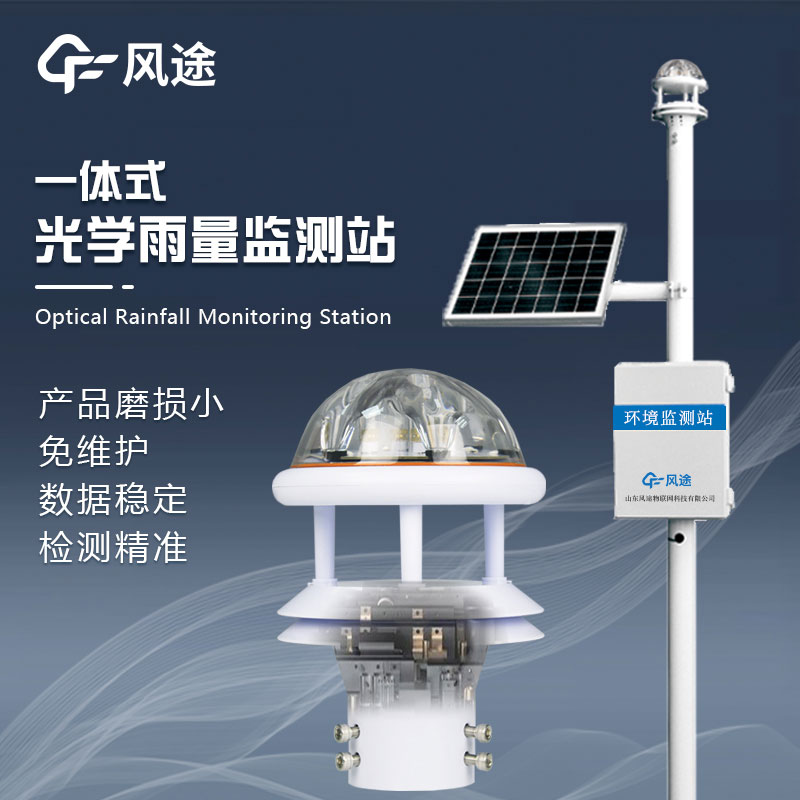Shandong Fengtu IOT Technology Co., Ltd
Sales Manager:Ms. Emily Wang
Cel,Whatsapp,Wechat:+86 15898932201
Email:info@fengtutec.com
Add:No. 155 Optoelectronic Industry Accelerator, Gaoxin District, Weifang, Shandong, China

Sales Manager:Ms. Emily Wang
Cel,Whatsapp,Wechat:+86 15898932201
Email:info@fengtutec.com
Add:No. 155 Optoelectronic Industry Accelerator, Gaoxin District, Weifang, Shandong, China
time:2023-06-13 17:10:08 source:Weather Station viewed:992 time
A rain gauge is a device used to measure the amount of rainfall, also known as a rain gauge or rain observer. It is able to collect and record the amount of rainfall that falls in a certain area during a certain period of time by certain technical means and output the corresponding data. Rain gauges have important applications in the fields of meteorology, hydrology, agriculture and environmental protection. Common rain gauges include radar rain gauges and tipping bucket rain gauges.
The advantages of rain gauges include:
1. High accuracy: Rain gauges can measure rainfall accurately and their accuracy is much higher than that of manual observation methods.
2. High degree of automation: rain gauges can automatically carry out measurements without manual intervention, greatly improving the efficiency of measurement.
3. Real-time: the rain gauge can record the changes in rainfall in real time, making the observation results more timely.
4. High sensitivity: the rain gauge can detect small changes in rainfall, thus providing a better understanding of the rainfall situation.
5. High data reliability: The rainfall measuring device's measurement results are reliable and can provide accurate data support for scientific research, weather forecasting and hydrological forecasting.
The rain gauge is mainly used to measure the amount of rainfall and to understand the distribution and change pattern of rainfall. Its significance is mainly reflected in the following aspects:
1. Water resources management: By understanding the distribution and changes of rainfall, water resources can be scientifically managed and utilised, natural disasters such as droughts or floods can be predicted, and corresponding countermeasures can be formulated.
2. Agricultural production: Agriculture is a weather-dependent industry, and rainfall has an important impact on crop growth and development, irrigation of farmland, etc. Through rainfall measurement, we can understand the impact of rainfall on agriculture and formulate agricultural production plans.
3. Construction: Rainfall has an important impact on construction projects, such as flooding, landslides and other natural disasters can cause damage to the project, through rainfall measurement can predict and take corresponding measures to ensure the safety of construction projects.
4. Weather forecasting: rainfall is one of the important indicators of weather forecasting. Through rainfall measurement, rainfall data can be obtained to provide a reference basis and improve the accuracy and reliability of weather forecasting.

The Radar Life Detector is developed by applying two - dimensional bio - radar life - detection technology, integrating comprehensive micro - power ultra - wideband radar technology and biomedical engineering technology. This system uses the multi - transmit and multi - receive imaging array technol...
With the rapid development of science and technology, modern meteorological and environmental monitoring systems, as the core of the operational meteorological monitoring system, are of great significance in enhancing the level of public meteorological services and improving the accuracy of meteorol...
an anemometer is used to measure what is wind speed and pressure, and is a common weather station instrument....
In a wheat planting area in the North China Plain, Soil Moisture Testing Equipment is playing an important role.This area has set up multiple soil moisture monitoring points. Each monitoring point is equipped with advanced sensor equipment. These sensors can monitor soil moisture, temperature and ot...